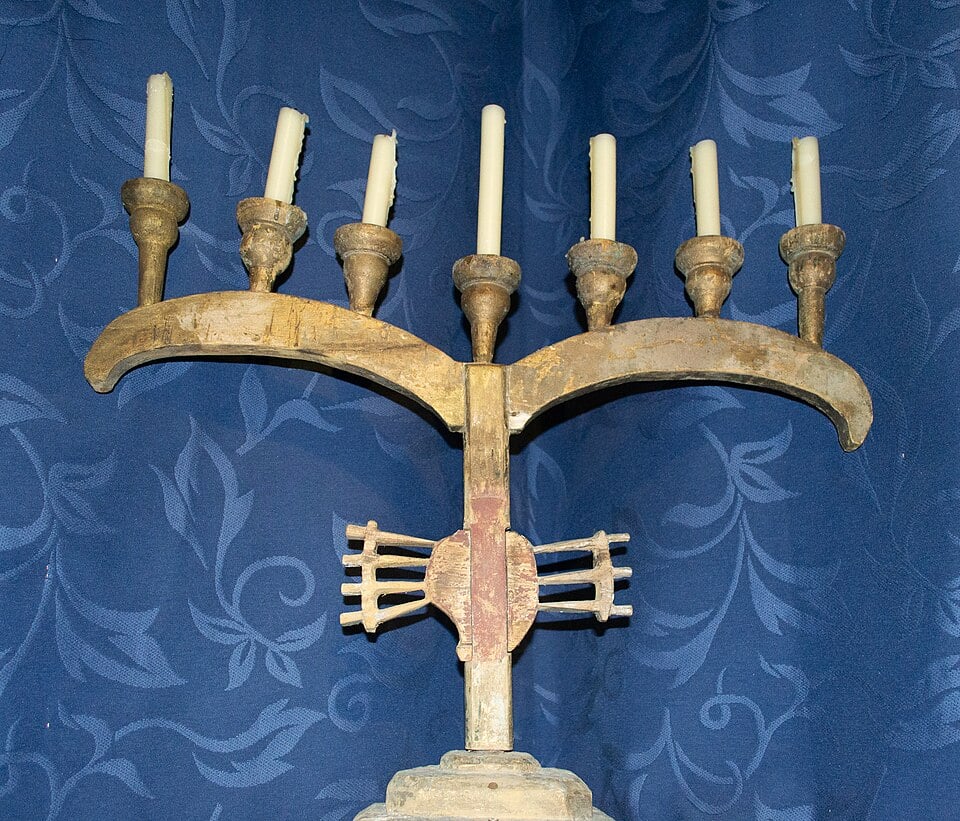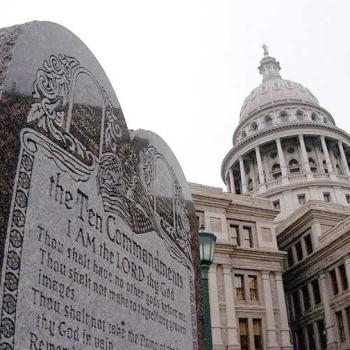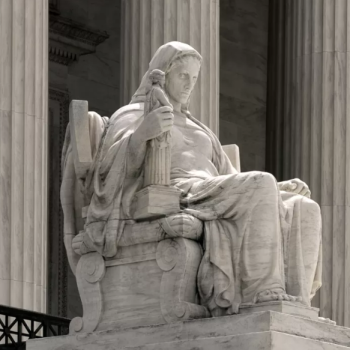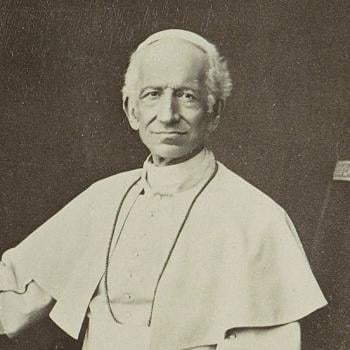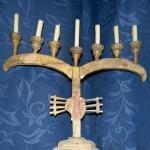Conversos were Jews in Spain and Portugal who were forcibly converted to Catholicism in the 14th and 15th centuries. Often the alternative was death. After conversion the conversos were still subject to mass violence, discrimination, and investigation by the Inquisition. Even though there were risks, it’s known that many conversos still practiced Judaism in secret. And, understandably, many Jews left Spain. Those who hadn’t already left were expelled in 1492 But what became of the conversos who remained?
I recently stumbled upon an article from Mosaic magazine, “The Gibberish a Madrid Doctor Mutters Going Into Church Is Really Hebrew Dating Back Six Hundred Years” (July 28, 2021) by the magazine’s language columnist Philologos. It tells the story of an Israeli physician who went to a medical conference in Madrid. At the conference he befriended a Madrileño colleague who offered to show him the nearby Catedral de la Almudena, the largest church in Madrid. But before entering the cathedral, the Spanish doctor crossed himself and muttered some words that were not Spanish. The doctor of Madrid then confessed he did not know what the words meant. It was just something people of his family always said before entering a church, he explained.
But the Israeli doctor recognized the words. They were Hebrew, from the Torah, Deuteronomy 7:26 — Shakets t’shaktsenu v’ta’ev t’ta’avenu. “Thou shalt utterly detest it and thou shalt utterly abominate it, for it is a cursed thing.” And suddenly, after 600 years, we get an intimate glimpse of the lives of conversos. This man’s ancestors were compelled to attend mass, but when they entered a church, they let God know they were acting under duress.
To fully appreciate the situation of the conversos, it’s helpful to know some background about the Jews of Spain.
Jewish Civilization in Spain
Historians believe the first Jewish communities on the Iberian Peninsula date to the time after the destruction of the Second Temple in Jerusalem, 70 CE At the time, Iberia was part of the Roman Empire. In the 5th century, as the western Roman Empire crumbled, Germanic Visigoths took control of most of Iberia. The Visigoth kings were Arian Christians. From what little evidence we have, it appears the Jews of Iberia lived peacefully under the Visigoth kings until 586, when the Visigoth King Recaredo converted from Arianism and accepted the Nicene Creed. Under King Recaredo and his heirs, the Jews of Iberia suffered oppression and forced conversions.
Arabic-speaking Moors from North Africa invaded the Iberian Peninsula in 711. The Jews of Ibera became their allies. By 714 most of the Iberian Peninsula was under Muslim control. Over the next few decades there were many rebellions and challenges. But by 756 the Muslim-controlled part of the Iberian Peninsula, which the Muslims called Al-Andalus, had been consolidated into the Emirate of Córdoba, which would later be the Caliphate of Córdoba. The Muslim rule of Spain had officially begun.
The period of Muslim rule, or some part of it anyway, is remembered now as the Golden Age of Jewish Culture in Spain. By that time the Jews of Iberia had developed a rich Hispanic-Jewish culture and a unique liturgical tradition. During this Golden Age more Jews came to Spain from North Africa, and some from further east, This gave Spain a significant Jewish population. The Golden Age is remembered for poetry and philosophical scholarship and idealized as a time when Jews, Muslims, and Christians lived peacefully together. Some scholars today say that the period is over-idealized and not as free from intolerance as remembered. But it does appear to be true that the Jews of Muslim Spain faced much less oppression than Jews in the rest of Europe.
The Reconquista, the Inquisition, the Expulsion
Throughout the Muslim rule of Iberia, Christian monarchs sporadically sent armies to take it back. These campaigns are remembered as the Reconquista. In the 13th century the Muslim domination of Iberia finally broke apart, and by the end of the 13th century the peninsula was entirely under Christian rule. By then the peninsula had also become divided into Spain and Portugal, although Spain was not yet unified and consisted of independent principalities.
It’s estimated there were at least half a million Jews in Spain as the Reconquista came to an end. They had long been thoroughly integrated into their communities. They owned property and businesses. Many held important public offices. As their communities were taken over by Christian armies, that old way of life was jeopardized. Some of the Christian rulers showed benevolence to Jews, but some did not. During the 14th century the lives of Jews in Spain became increasingly precarious. Violence against Jews, including the destruction of synagogues, escalated. The terrorism reached a peak late in the 14th century when a high-ranking Catholic priest named Ferrand Martinez went on a crusade against Jews. In 1391, several thousand Jews in Seville were massacred by rioting mobs. Appearing to convert was one strategy for avoiding massacre. Others, understandably, left Spain.
In the 1470s the Catholic monarchs Ferdinand and Isabella came to power and unified Spain under their rule. Ferdinand and Isabella established the Spanish Inquisition in 1478. The initial aim of the Spanish Inquisition was to identify and punish heretics among the Jews and Muslims of Spain who had converted to Catholicism. (Note: the converted Muslims were called Moriscos.) To be sure the point was driven home, those accused were paraded in public, forced to make public confessions, and then were publicly sentenced — to flogging, to prison terms, sometimes to slavery. And many were executed, often by being burned at the stake. Confessions often were obtained by torture.
On March 31, 1492, the Spanish monarchs ordered all openly practicing Jews to leave Spain by the end of July. Scholars estimate this may have been about 100,000 people by then. Some fled to Portugal, from which they were evicted five years later. Some took ships to North Africa, and others to other parts of Europe. On August 3, three days after the deadline, an Italian adventurer name Christophorus Columbus sailed from the Spanish port of Palos de la Frontera on a quixotic mission to find a sea route to Asia by sailing west. His three ships were funded by the Spanish monarchs, probably from wealth confiscated from expelled Jews and conversos found to be heretics.
What Became of the Conversos Who Remained?
There may have been as many as 300,000 conversos in Spain after the expulsion. Their lives were not easy. They remained under the suspicion of the Inquisition. From 1570 to 1700 the Spanish Inquisition executed 5,000 people for heresy, which included Judaism. People known to be from converso families also were excluded from some positions of authority. And through these centuries many conversos chose to leave Spain. By the 16th century the Dutch Republic had become a haven for many minority religions fleeing persecution. In 1656 England ended its ban on Judaism and allowed Jews to openly practice Judaism, and many Spanish conversos moved there.
But why did any of them convert and stay? Consider that in 1492 many Jewish families had roots in Spain that were nearly fourteen centuries deep. And there were no guarantees that any other place would be more welcoming. Further, according to David M. Gitlitz, professor of Hispanic studies at the University of Rhode Island, as converts opportunities had opened to them that had been closed before. And by the 1450s the conversos had become the new urban middle class. “They were dominant in business,” Gitlitz said. For that reason, laws were passed that closed some positions of authority to “new Christians.” In spite of oppression, conversos influenced Spain’s lit4erary and intellectual culture,
Still, by the time the Spanish Inquisition officially ended in 1834, the descendants of the conversos had lost touch with Judaism. I’ve found no accounts of 19th century Spanish families suddenly outing themselves as underground Jews. Yet remarkable traces of that heritage remain, such as in the mumbled Hebrew words of the Spanish physician.
A Note on the Sepharadim
The Jews who left Spain, and those who came to practice their style of Judaism, are the Sepharadim or Sephardic Jews. The word Sephardic is from the Hebrew word for Iberia, Sepharad, I’ve written about them before; see “Jews in Colonial America.” The first Jews in North America were a group of Sepharadim who arrived in New Amsterdam, today’s New York City, in 1654.
